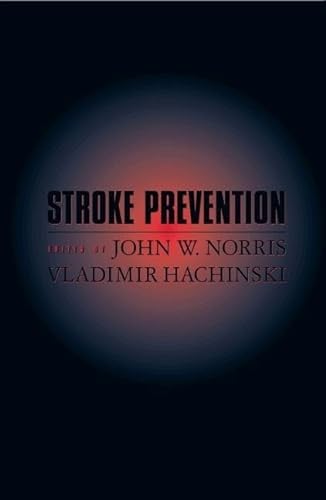Items related to Stroke Prevention

"synopsis" may belong to another edition of this title.
Having edited a book on this topic a decade ago (Prevention of Stroke. New York: Springer-Verlag, 1991), Norris and Hachinski, who are recognized experts in the field of cerebrovascular disease, set out to bring the book up to date with respect to advances in stroke prevention from an international perspective. In particular, they wished to focus on newly identified risk factors for stroke and new therapeutic approaches. Although its emphasis is not explicitly stated, this book deals almost exclusively with ischemic stroke, which accounts for approximately 80 percent of all strokes. Multiple authors, selected for their expertise in a particular area, contributed to the individual chapters. The quality of the writing and of the information provided is exceptional, despite an occasional one-sided view of a controversial subject. The authors, who have spent their careers performing clinical trials in stroke prevention and lecturing on these topics, provide a novel perspective on the evolution of efforts in stroke prevention over the decades. The inclusion of authors from outside the United States provides a global dimension to discussions of the issues confronted in stroke prevention, which are emphasized in the final chapters of the book.
The book has three sections: ``Primary Prevention,'' ``Secondary Prevention,'' and ``Prevention: Policy and Practice.'' The distinction between primary and secondary prevention can be problematic. Why should the management of atrial fibrillation be considered primary prevention, whereas the management of patent foramen ovale or a prosthetic valve is designated secondary prevention? Since all the conventional vascular risk factors are discussed in the section on primary prevention, the notion that there may be different goals for secondary prevention is not broached. Secondary prevention is defined by the editors as prevention after patients have had a transient ischemic attack or a stroke, and although this is a conventional definition, it is clear that cerebrovascular disease may begin well before symptoms appear. Research in defining preclinical disease with biologic or genetic markers to effect early intervention is on the forefront of stroke-prevention efforts.
The inclusion of a section dealing with the implementation of the results of clinical trials and the economics of stroke prevention is laudable. These subjects are rarely raised in treatises on stroke prevention, but they are of critical importance. In chapters dealing with clinical epidemiology and trial design, there are useful tables defining and summarizing terminology that may be unfamiliar to some readers, such as the measures used to assess the results of screening tests, the classification of diagnostic recommendations on the basis of the strength of the scientific evidence, and the phases of clinical trials.
This book comes at an important crossroads in terms of clinical trials in stroke prevention. Issues regarding carotid endarterectomy for symptomatic carotid stenosis and the medical management of atrial fibrillation have largely been resolved. The statins have emerged as a new class of stroke-prevention agents. There are ongoing studies exploring carotid stenting, indications for the use of warfarin, and the treatment of hyperhomocysteinemia; in the future, one hopes there will be trials to assess the effects of lifestyle and dietary modification.
It is important to recognize that the major strength of this book is its comprehensive review of epidemiologic studies and clinical trials in the area of stroke prevention. The reference lists are uniformly exhaustive and current. It is less useful as a practical, handbook-style clinical guide, and several chapters cite consensus guidelines for those seeking such information.
This book establishes the state of the art for stroke prevention and provides a vision of the research necessary to further stroke-prevention efforts in the coming years. Since the publication of this book, several new studies of the effects of antihypertensive therapy, estrogens, and antithrombotic therapy on the risk of stroke have already emerged. This is a rapidly evolving field of science, one that warrants this type of routine comprehensive updating.
Karen Furie, M.D., M.P.H.
Copyright © 2002 Massachusetts Medical Society. All rights reserved. The New England Journal of Medicine is a registered trademark of the MMS.
"About this title" may belong to another edition of this title.
- PublisherOxford University Press
- Publication date2001
- ISBN 10 019513382X
- ISBN 13 9780195133820
- BindingHardcover
- Edition number1
- Number of pages368
- EditorNorris John W., Hachinski Vladimir
Buy New
Learn more about this copy
Shipping:
FREE
Within U.S.A.
Top Search Results from the AbeBooks Marketplace
Stroke Prevention
Book Description Hardcover. Condition: New. 1. Seller Inventory # DADAX019513382X
Stroke Prevention
Book Description Hardcover. Condition: new. New Copy. Customer Service Guaranteed. Seller Inventory # think019513382X
Stroke Prevention
Book Description Hardcover. Condition: New. Brand New!. Seller Inventory # VIB019513382X

